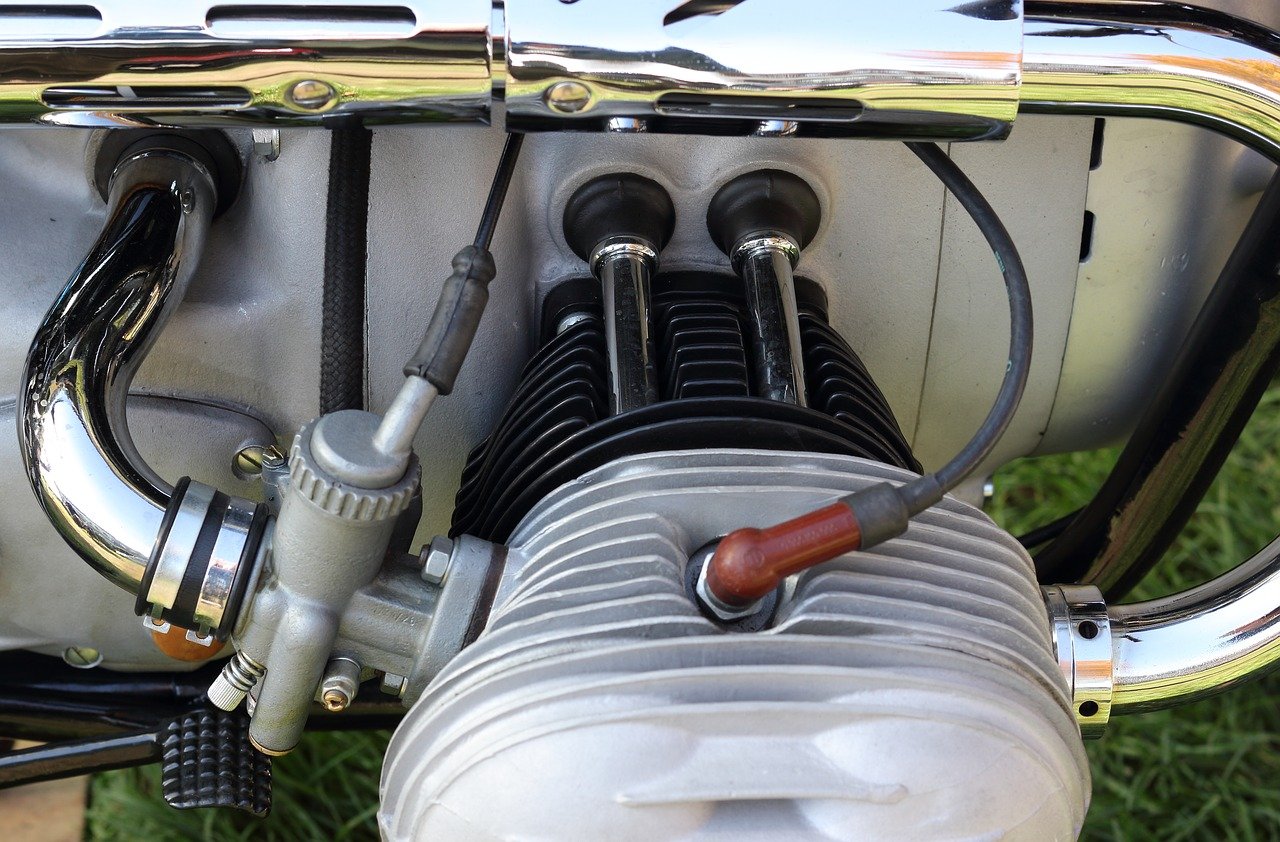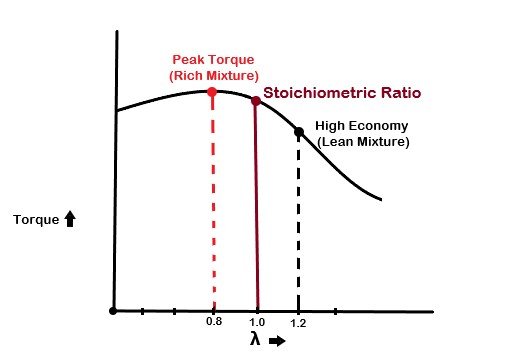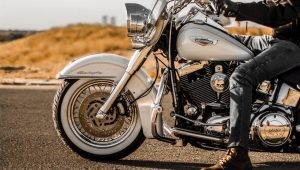How to tell if the motorcycle engine is running lean or rich?
Updated on | By Mohit Chauhan

Tuning your motorcycle engine for optimal performance is quite simple, and if you are not a novice motorcyclist, you probably have done this once in your life. There are many notions particularly in the enduro community that it makes no sense whatsoever to fuel the carburetor as per the recommended A/F ratio, since there are so many variations when it comes to riding on the track, that the optimal performance of an engine is useless. If you are intrigued and wondering how much of this is true. Our engineers have finally decided to answer this query once and for all.
When it comes to burning any sort of fuel we have something that’s known as stoichiometry, now what that means is basically how much fuel you need for a given amount of air, conversely, how much air you need for a given amount of fuel so that a complete combustion takes place. In other words, Stoichiometric ratio is the exact ratio between air and fuel at which complete combustion takes place. The ratio should be neither too rich nor too lean and should contain just enough oxygen atoms to burn the fuel completely.
What is the meaning of rich or lean mixture?
Lean Fuel mixture
A lean mixture contains a higher percentage of air as compared to the fuel. And due to an inadequate supply of fuel, the engine does not reach its full power. Moreover, the engine heats more rapidly because the dissipation of heat by evaporation of the fuel is too low and the lack of fuel has an effect on the lubrication thereby increasing friction inside the combustion chamber which has an added risk of engine seizure.
However, you end up saving a lot on fuel. For instance, if the riding style is basically restricted to steady-state cruise, you can actually lean up your mixture to save fuel. This is because the lean mixture has less fuel and more air, you achieve a higher lambda value (see graph below). Of course as you can see in the graph, the torque is reduced but there’s a balancing point where you end up getting better fuel economy with a decent torque overall.
Rich fuel mixture
A rich mixture contains a lower percentage of air (compared to stoichiometric ratio) and a higher percentage of fuel; as a result, you get more torque and more power from the engine. However, rich mixture generally leaves the combustion incomplete, and some of the fuel will be left in the combustion chamber un-burnt. This results in production of a plume of smoke that can be seen coming out from the exhaust.
You can do calculations to work out what the stoichiometric ratios are of each fuel type you are trying to burn. For example, gasoline or pure octane that we usually fill in our motorcycle tanks needs 14.7 parts of air for every 1 part of fuel to burn completely.
At this point of time we would like to introduce you to the concept of “lambda” (symbol: λ) Now lambda is basically how rich or lean a mixture is. In case of a stoichiometric ratio, the lambda is always 1 (for fuels used by motorcycle engine stoichiometric ratio is 14.7:1 and λ=1), if λ <1 then the engine is running on rich mixture, likewise, if λ >1 then the engine is running on lean mixture.

Now that you have understood the concept of A/F ratio and the fact that by changing the ratio we can run the engine on rich or lean mixture, let’s talk about what are the effects of running different air/fuel ratios on motorcycle engine.
Now of course your natural inclination is probably to think that you want to run an ideal score of λ=1. But this isn’t really the case, brands that are known for producing powerful motorcycles tend to keep their λ slightly less than 1, this helps them achieve more power and torque at an expense of higher fuel consumption. And there are some brands that tend to keep λ >1, this obviously means burning less fuel and you end up having a higher fuel economy with a slightly suppressed engine.
Keep in mind that tweaks done in a factory with detailed analysis are lot more different than the ones done by your mechanic. Tuning your engine to make it extremely rich or extremely lean in order to achieve a higher torque or higher fuel economy comes with its downside.
Consequences of running your motorcycle too lean
As you know, an engine needs fuel and oxygen in order to run properly and the operating state will be optimal when the ratio of these two elements is in compliance with the stoichiometric ratio.
If there is a deficit of fuel in relation to the air then there is a high possibility that the engine will be running on a lean mixture.
On a motorcycle engine that is running on unleaded fuel, the ideal ratio will be around 14.7 doses of air for single dose of fuel (14.7:1) while this will increase or decrease depending on the type of fuel you use. Either way, there is no such thing as a perfect blend, it is usually either a bit lean or a bit rich. So let’s discuss the consequences of a lean mixture, i.e., less fuel and more oxygen being supplied to the motorcycle engine:
- The more the mixture becomes lean, the more the combustion temperature tends to rise. This excess heat can then induce stress on the internal parts of the combustion chambers as you would expect, and the head gasket can rupture quickly.
- Combustion at high temperature emits nitrogen oxide (NOx) as a by-product; a gas very harmful for the lungs and has been in controversies lately.
- It is not only the engine that suffers when the mixture is lean, the catalyst may also be degraded due to the excessively high temperature of the exhaust gases.
- Lean mixture causes engine rattling which is dangerous for the combustion chambers. Also it causes multiple detonations that may create holes in the chambers.
Lately to cool the combustion chamber, the EGR valve is being used in modern day motorcycle engines, which assists in re-injecting the exhaust gases into the combustion chambers. By reducing the oxygen level, the combustion is limited and therefore a lower temperature (a bit like smothering a fire with a blanket) is achieved inside the engines. Lean mixture, thus, has its pros and cons; on one hand the high operating temperature can harm the engine, but, on the other hand, it leads to a reduction in the consumption of fuel.
Consequences of running your motorcycle too rich
Unlike lean mixture, a rich mixture causes the temperature inside the combustion chamber to drop, as the excess fuel usually cools the entire chamber by absorbing excessive heat. This technique is widely used in superbike and hyperbikes, where torque is given priority over fuel consumption.
- The surplus amount of fuel generates a surplus amount of power before reaching a threshold level. It is estimated that the maximum engine power is reached with a richness of around 0.80 and therefore a ratio of 12.5:1 in the case of unleaded fuel. There is no point in enriching more as this ratio has already reached the threshold for this type of fuel.
- An excess amount of fuel involved in combustion often leaves traces of hydrocarbons, carbon monoxide and other fine particles which do not get burnt completely.
- In addition to this, an insufficient supply of oxygen causes a partial combustion which results in more fuel consumption and relatively less power (inefficient engine; that consumes more calories to deliver desired amount of power)
- In order to enrich the mixture we are deliberately sending more fuel for the same amount of air, which is quite simply, the cause of pollution.
- With un-burnt and thicker exhaust gases, the engine will clog faster as well. Moreover, the condition of spark plugs will deteriorate more rapidly.
How to tell if the air fuel mixture is too lean?
When a carburetor is running lean, the air-to-fuel ratio is increased and the combustion chamber is supplied with too much air. You will notice the below symptoms if your motorcycle is running lean:
- Frequent backfire while riding.
- Throbbing acceleration even with a constant throttle
- Formation of white or gray soot around the spark plugs
- Delay in response
- Engine overheating
How to tell if the air fuel mixture is too rich?
You will notice the below symptoms if your motorcycle is running rich:
- Strong smell of fuel when the engine starts
- High fuel consumption
- Dirty air filter
- Formation of black soot around the spark plugs and exhaust pipes
Will a lean or rich mixture affect engine performance?
The stoichiometric, or chemically correct, dosage of the air-petrol mixture is of the order of 14.7:1. If, with respect to this value, the air is in excess, we term it as lean mixture and on the other hand, if, there is lack of air and therefore the fuel is in excess, we term it as rich mixture. The engine provides the highest power, at any rpm, with a significantly rich mixture (12.5:1). The best performance, and therefore the lowest consumption, on the other hand, is obtained with slightly lean blends. In any case, it is not possible to go beyond certain values, in both directions, as the combustion “deteriorates”, the operation of the engine becomes irregular, and it is even possible to leave the ignition range.
How can I tell if the carburetion is rich or lean?
The motorcycle is not just a comfortable motor vehicle that allows agile movements. It represents a lifestyle, a significant part of oneself. Whether it is a racing bike or an urban bike, constant maintenance is required to use this machine to its full potential. In addition to taking care of its aesthetics, periodic maintenance of its mechanical parts is essential for correct and trouble-free riding. There can be numerous signs of malfunction when it comes to motorcycle engine. A very common one is the bad carburetion due to incorrect air-fuel mixture. This can be identified by analysing few things:
- Warm up the motorbike engine, then put it to idle for about 40/50 seconds;
- Try to accelerate and, if the bike responds immediately without metallic noise, the idle jet is correctly adjusted
- If the motorcycle smokes, during the air intake, it means that the idle jet is too high
- If the accelerating bike does not rev up and makes a vacuum noise, the idle jet is too low
How to fix the bad carburetion of bike
Carburetor, through a mechanism of high and low jet of fuel, feeds the engine required for combustion. However, it may happen that these jets are not perfectly adjusted, leading to different engine scenarios; rich or lean. These two are the most common scenarios and are caused due to bad adjustments of fuel inlets. While in the first case, if there is an increase in the emission of smoke from the muffler during acceleration, it is probably caused due to a high jet stream of fuel entering the carburetion system. And, in the second case, due to an excessive reduction of the carburetor idle jet, it is possible that the motorcycle does not respond at all during accelerations.
So before you try to fix the bad carburetion of your motorcycle, it is necessary to bring the engine to a normal operating temperature before turning it off. At this point, tweak the settings by tightening or loosening (depending on the issue) the adjusting screws of the carburetor to align the position of the internal needle of the carburetor. This is normally adjusted through simple turns of the screw (a maximum of four), but remember that the optimal positions are never the extreme ones.
The adjustment allows the needle to open or close the fuel jet for carburetion, thereby mitigating the problem of rich or lean mixture entering the system. To find out if the carburetion is working correctly, you can observe the color of the spark plug, which will be hazelnut. It is a little trick that tells we have done a good job!
Bottom Line
Before arriving to the conclusion that your motorcycle engine is running lean or rich, it is important to strike out other underlying factors that may have caused performance issues. Perfect carburetion requires a clean air filter. Sometimes replacing a dirty air filter immediately resolves what appeared to be a carburetion problem.
Also, it should be kept in mind that in order to fix a bad carburetor, it is necessary to do so in an optimal running temperature.
Another piece of advice that may seem superfluous or obvious is to always use high quality fuel. You can have a brand new motorcycle and in a very short time find yourself with countless problems, including those related to running lean or rich if you have chosen poor quality fuel that is unhealthy for the bike.




